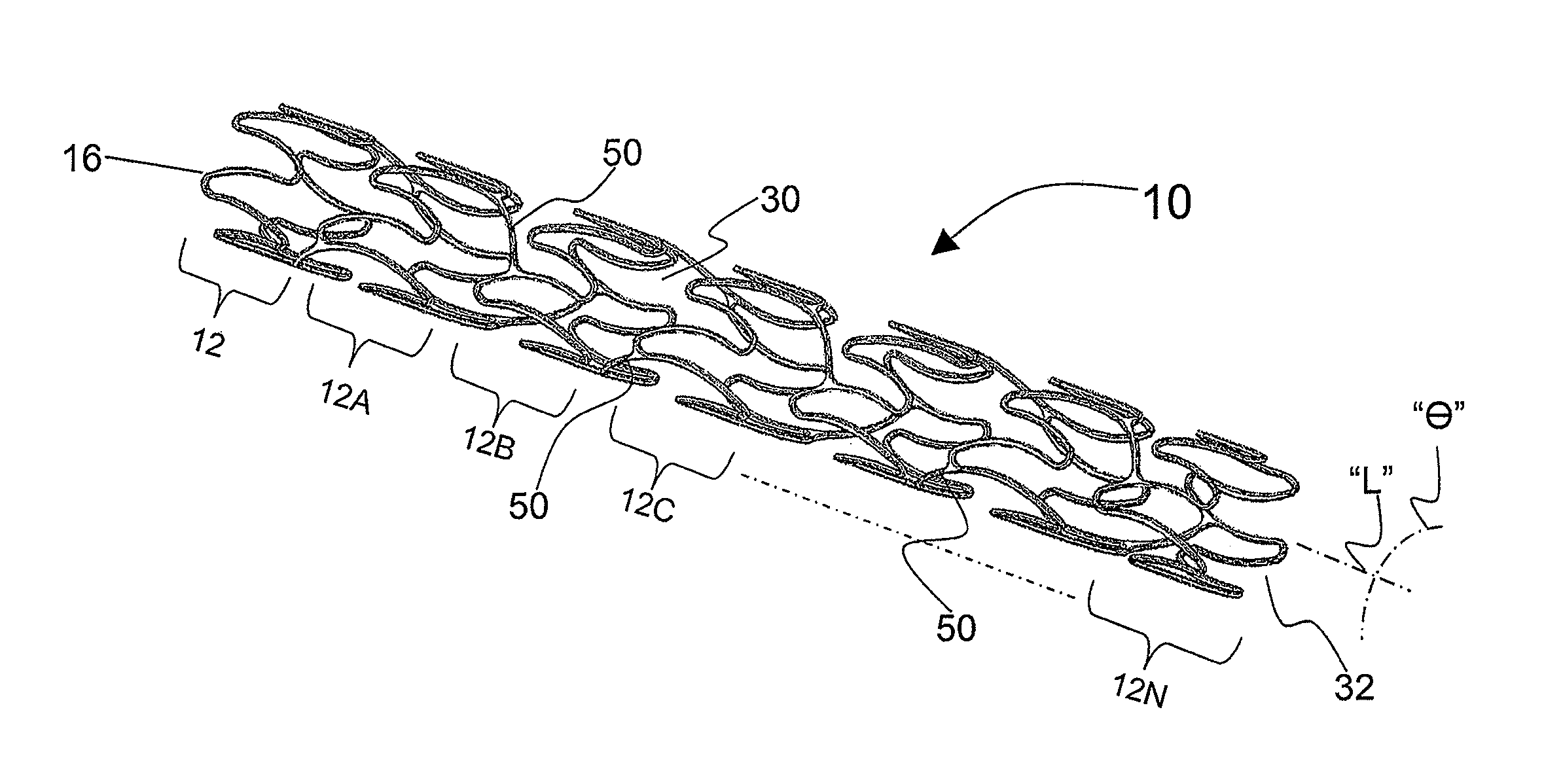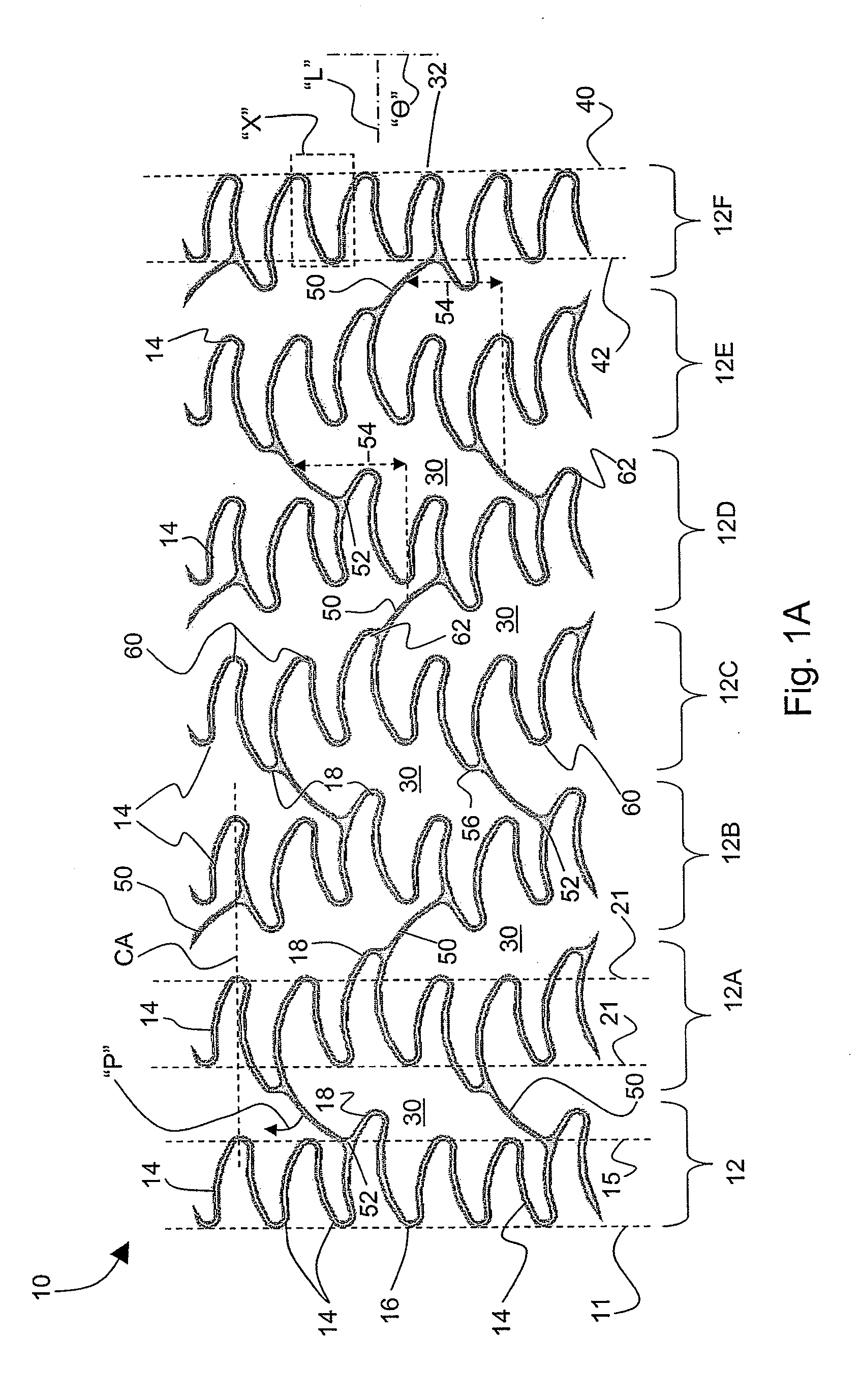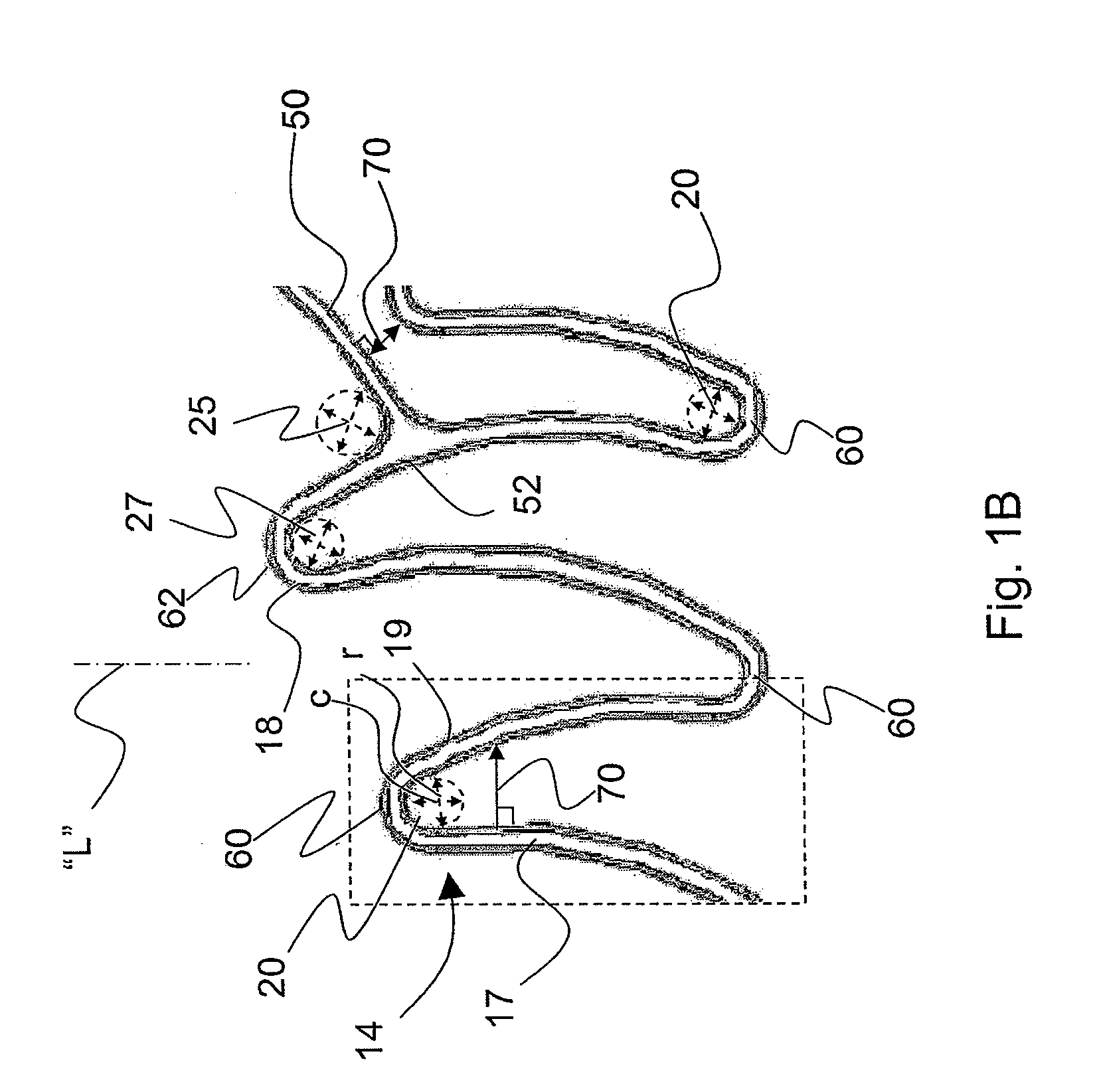Flexible extendable stent and methods of surface modification therefor
a flexible, stent technology, applied in the field of medical stents, can solve the problems of many commercially available coated stents suffering from problems, stents can potentially impede the flow of blood, and many commercially available stents suffer from complications, etc., to achieve excellent biomechanical properties and optimal surfaces
- Summary
- Abstract
- Description
- Claims
- Application Information
AI Technical Summary
Benefits of technology
Problems solved by technology
Method used
Image
Examples
Embodiment Construction
[0076]The accompanying drawings are described below, in which example embodiments in accordance with the present invention are shown. Specific structural and functional details disclosed herein are merely representative. This invention may be embodied in many alternate forms and should not be construed as limited to example embodiments set forth herein.
[0077]Accordingly, specific embodiments are shown by way of example in the drawings. It should be understood, however, that there is no intent to limit the invention to the particular forms disclosed, but on the contrary, the invention is to cover all modifications, equivalents, and alternatives falling within the spirit and scope of the claims. Like numbers refer to like elements throughout the description of the figures.
[0078]It will be understood that, although the terms first, second, etc. may be used herein to describe various elements, these elements should not be limited by these terms. These terms are used to distinguish one e...
PUM
 Login to View More
Login to View More Abstract
Description
Claims
Application Information
 Login to View More
Login to View More - R&D
- Intellectual Property
- Life Sciences
- Materials
- Tech Scout
- Unparalleled Data Quality
- Higher Quality Content
- 60% Fewer Hallucinations
Browse by: Latest US Patents, China's latest patents, Technical Efficacy Thesaurus, Application Domain, Technology Topic, Popular Technical Reports.
© 2025 PatSnap. All rights reserved.Legal|Privacy policy|Modern Slavery Act Transparency Statement|Sitemap|About US| Contact US: help@patsnap.com



